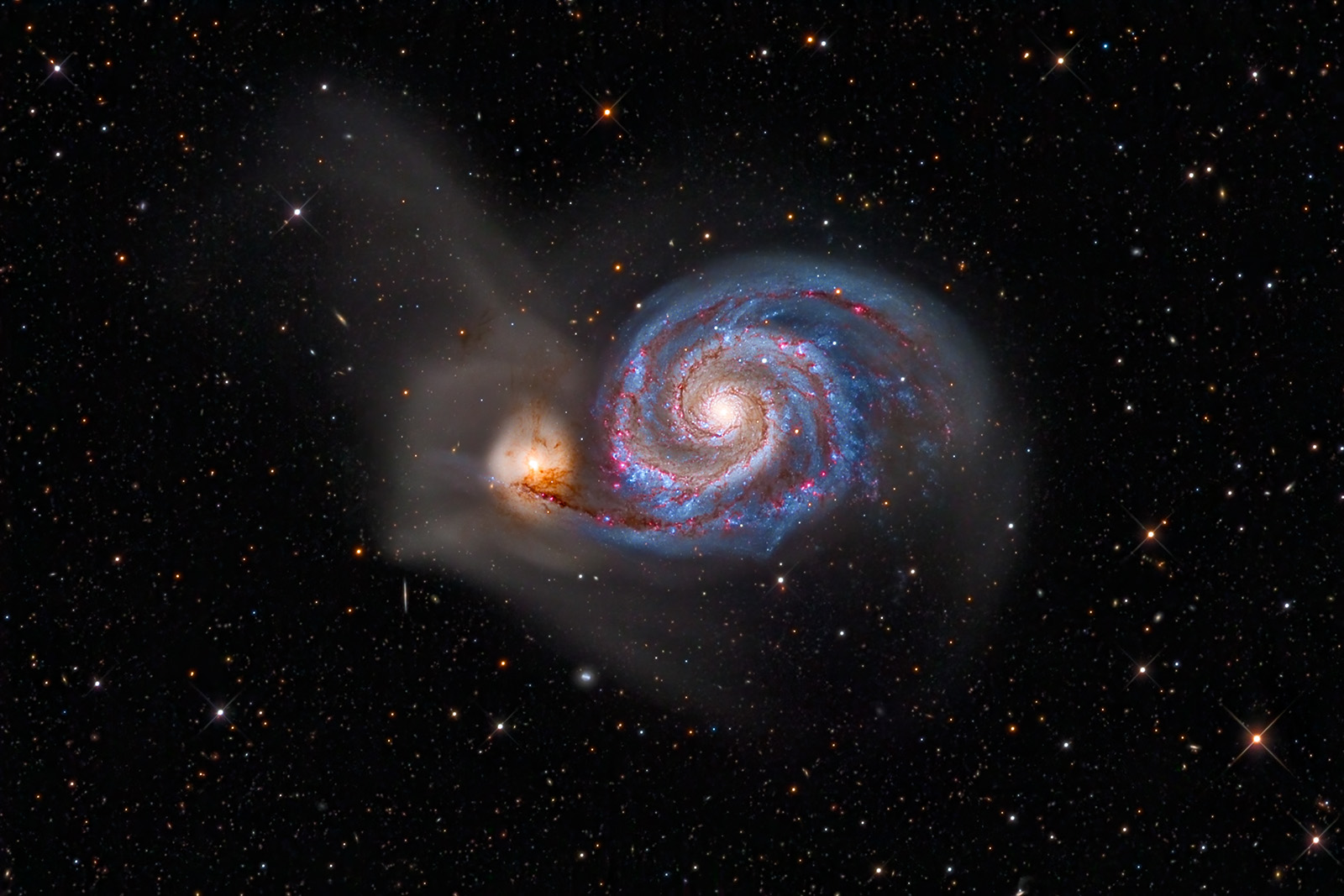
 |
The Whirlpool Galaxy |
|||||||||||||||||||||
About This PhotographOne of the most famous, photographed, and studied astronomical objects, the Whirlpool Galaxy is also perhaps the finest example of the "grand design" spiral form. In fact, this is the celestial object in which spiral structure was first detected, by Irish astronomer Lord Rosse (William Parsons) in 1845. Note that there are actually two galaxies here, involved in an intricate cosmic dance. The smaller galaxy, to the left, is known only as NGC 5195 and is actually behind the larger M51 as can be discerned by the dark clouds of dust in one of M51's spiral arms silhouetted against it. According to the "density wave" theory of how spiral arms are formed in galaxies in the first place, it may actually be the gravitational influence of this close encounter that gave rise to M51's beautiful whirlpool structure. Another result of this gravitational tango is the throwing off of huge swaths of stars and other material from both galaxies into intergalactic space, seen here as the faint "extra arms" extending away. Galaxies have no solid structure to hold them together, so gravitational disturbances caused by their passage near one another can literally tear both of them apart. Note that this only applies to the forms of the galaxies themselves, though. Collisions between individual stars in such an encounter are exceedingly rare. The resulting waves of compression of interstellar dust and gas, however, do give rise to a burst of new star formation, seen here as hot, bright blue newborn stars and patches of red, glowing ionized gas – the "stellar nurseries" from which even younger stars are emerging. | |||||||||||||||||||||
|
|||||||||||||||||||||